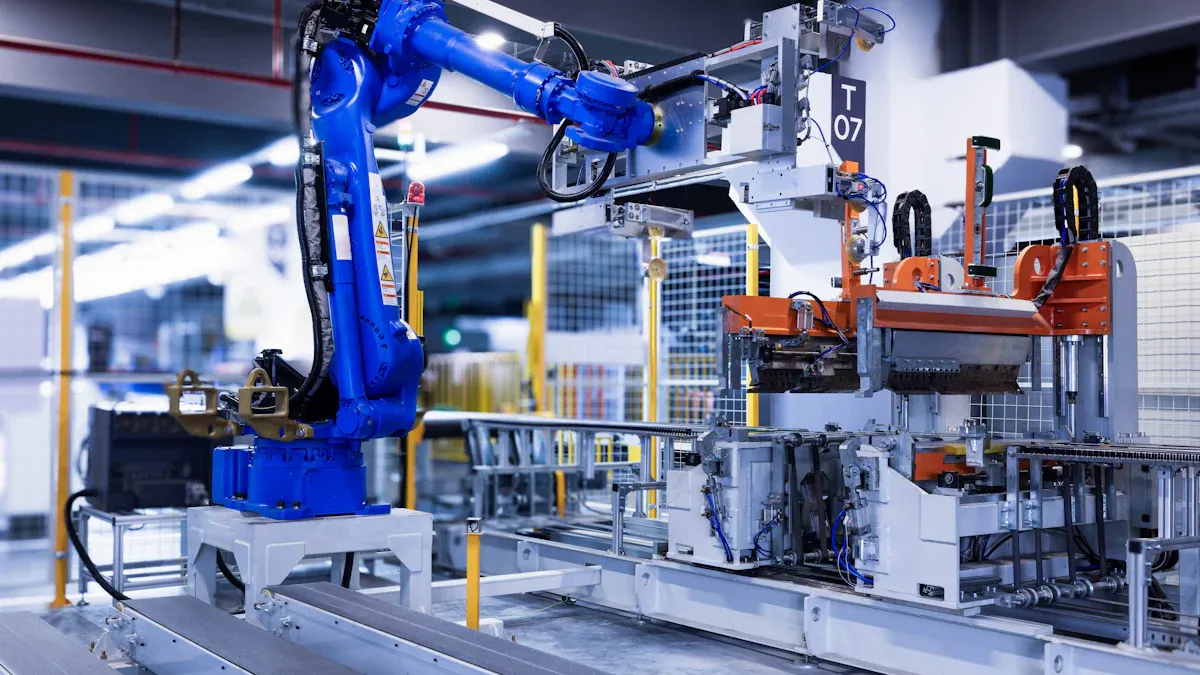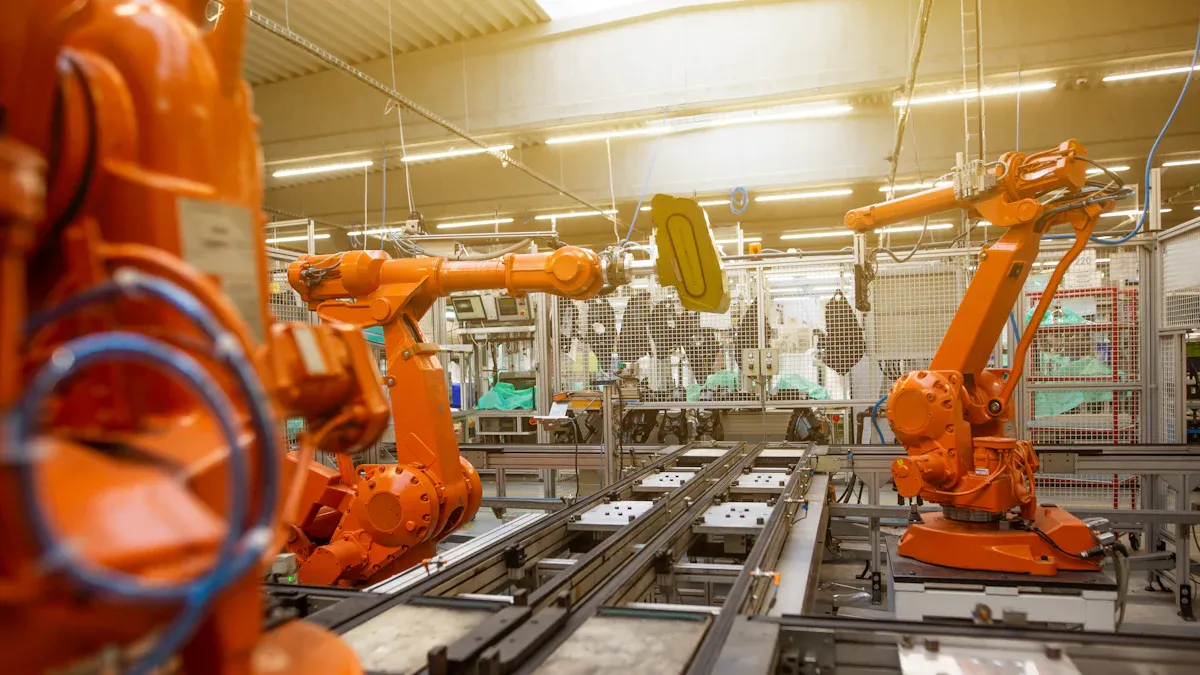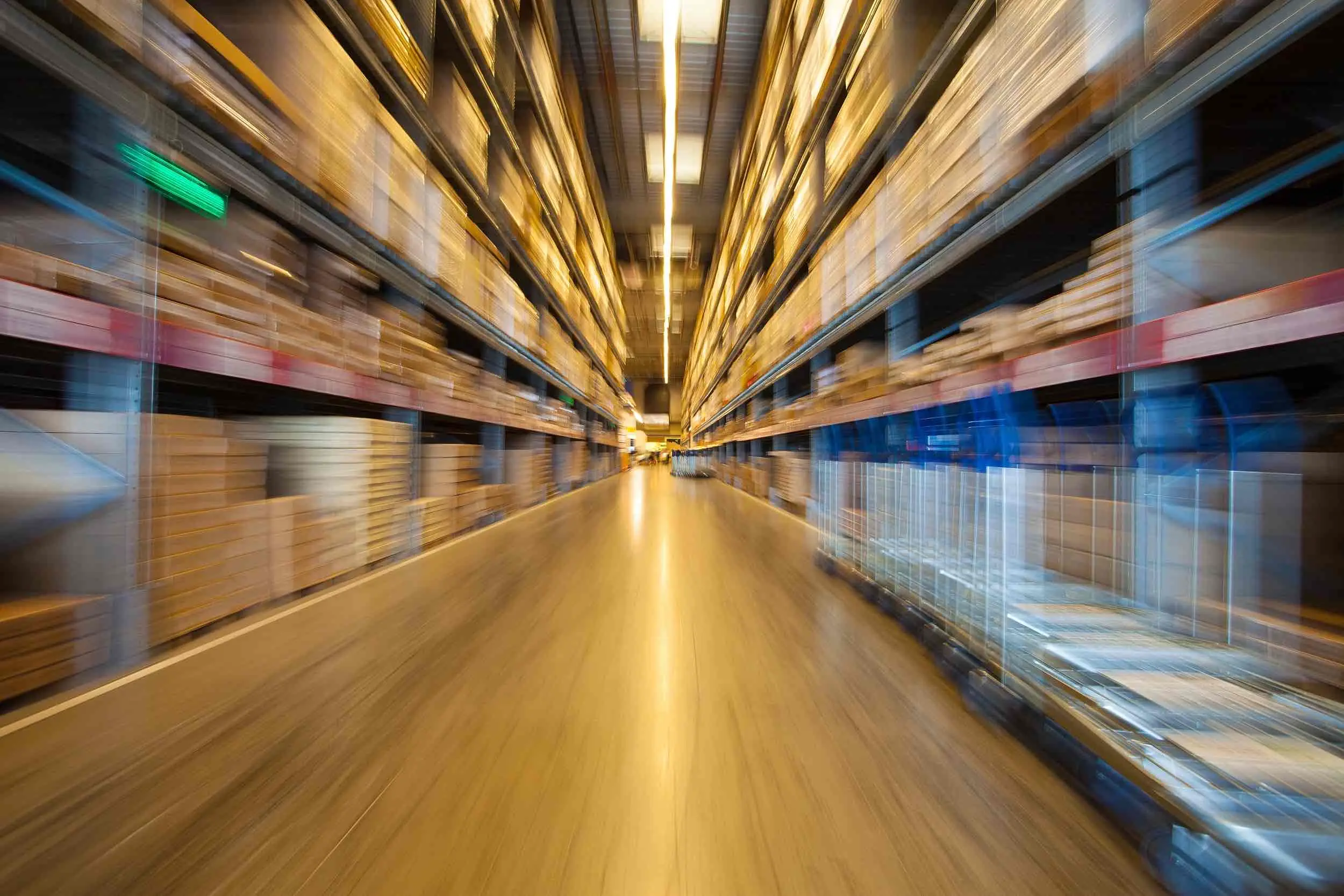Warehouse automation market and the impact of tariffs

Tariffs play a pivotal role in shaping the warehouse automation market, influencing both costs and investment strategies. Economic uncertainty caused by tariffs often deters decision-makers from approving large expenditures, slowing capital investments in automation. For example, a 25% steel tariff raises equipment costs, reducing returns on investment and delaying projects. Businesses also adjust by increasing inventory levels to mitigate supply chain disruptions, further driving warehouse demand.
Scriven from Interact Analysis stated, "The current tariff-fueled uncertainty is expected to lengthen sales cycles for warehouse automation technologies, particularly for high-cost, end-to-end systems that require long-term planning."
This raises a critical question: How do tariffs reshape the warehouse automation market, and what challenges and opportunities emerge for businesses navigating these changes?
Key Takeaways
Tariffs raise prices for automation tools, making upgrades harder.
Companies spend less on new tools because tariffs cause doubt.
Businesses move factories closer to avoid global supply chain problems.
Using better inventory plans, like live tracking, saves money and stock.
JUSDA gives tools to handle tariff problems and cut supply costs.
Key Impacts of Tariffs on the Warehouse Automation Market

Rising costs of automation equipment and components
Tariffs have significantly increased the costs of automation equipment and components, creating challenges for businesses in the warehouse automation market. Components such as sensors, microchips, and batteries, often sourced from China, now face a 10% tariff. This has led to higher production costs for companies, particularly startups in the agricultural technology sector. Larger manufacturers are also grappling with rising expenses due to tariffs on steel, aluminum, and machinery components. These costs are frequently passed down the supply chain, impacting end-users.
Tariffs on steel and aluminum have driven up the cost of constructing automated storage and retrieval systems (ASRS).
A study by the University of Illinois revealed that prices for essential materials like potash could increase by over $100 per ton due to a 25% tariff on potassium fertilizers.
These rising costs not only strain budgets but also delay the adoption of advanced automation technologies. Businesses must now carefully evaluate the return on investment for automation projects, often opting for scaled-down solutions or postponing upgrades.
Slowdown in capital investments for automation projects
The economic uncertainty caused by tariffs has led to a noticeable slowdown in capital investments within the warehouse automation market. Decision-makers are hesitant to approve large expenditures, fearing that future policy changes could undermine their investments. According to industry expert Scriven, this hesitation has extended sales cycles for automation technologies, particularly for high-cost, end-to-end systems.
Automation vendors have reported that their clients are increasingly concerned about the financial implications of tariffs. This has resulted in delays for major automation projects, further contributing to the broader slowdown in the sector. Companies are prioritizing short-term cost management over long-term technological advancements, which could hinder innovation and competitiveness in the market.
"The current tariff-fueled uncertainty is expected to lengthen sales cycles for warehouse automation technologies," Scriven noted, emphasizing the challenges faced by businesses in navigating this complex landscape.
Reshoring and outsourcing trends in response to tariffs
Tariffs have also influenced reshoring and outsourcing trends, as companies seek to mitigate the impact of rising costs and supply chain disruptions. Many businesses are reshoring operations or relocating critical inventory closer to home to reduce dependency on global supply chains. Automated storage and retrieval systems (ASRS) have emerged as a key solution to address the challenges associated with reshoring.
Reshoring Challenge | ASRS Advantage |
|---|---|
High labor costs | |
Limited domestic space | Reclaim up to 85% of floor space |
Inventory localization needs | High-density storage supports 'just-in-case' strategy |
Global supply chains remain fragile, and tariffs exacerbate these vulnerabilities. Companies are increasingly adopting ASRS to optimize space utilization and manage inventory more effectively. Recent research highlights that tariffs introduced in April 2025 have caused significant disruptions in the global supply chain, particularly affecting the warehouse automation sector. By leveraging automation, businesses can navigate these challenges while maintaining operational efficiency.
Changes in inventory management strategies
Tariffs have compelled businesses to rethink their inventory management strategies to mitigate risks and maintain operational efficiency. Companies are adopting proactive measures to address the challenges posed by fluctuating import costs and supply chain disruptions.
Advanced forecasting tools are now widely used to predict buying patterns. These tools enable businesses to optimize inventory levels, reducing the risks associated with overstocking or understocking.
Many organizations are pre-building inventory to counteract the impact of increased import costs. By increasing stock levels before new tariffs take effect, businesses can stabilize their supply chains and avoid sudden cost spikes.
Diversifying sourcing and manufacturing locations has become a critical strategy. Companies are shifting production to countries like Vietnam and India to reduce their exposure to tariffs and ensure a steady supply of goods.
These strategies not only help businesses navigate the complexities of the warehouse automation market but also enhance their resilience against future economic uncertainties. By leveraging technology and diversifying operations, companies can maintain a competitive edge while adapting to the evolving trade landscape.
Tip: Businesses that integrate real-time inventory tracking systems, such as JUSDA's JusLink, can gain greater visibility and control over their supply chains, further optimizing inventory management.
Disruptions in e-commerce and fulfillment operations
The e-commerce sector has faced significant disruptions due to tariffs, which have increased costs and complicated fulfillment operations. These challenges have forced businesses to reevaluate their global strategies and adopt more flexible operational models.
Tariffs have raised costs for businesses, prompting them to find innovative ways to maintain profitability. For example, some companies are exploring smarter fulfillment models to streamline operations and reduce expenses.
The elimination of the $800 duty-free threshold has introduced stricter customs scrutiny for low-value shipments. This change has complicated international order management, leading to delays and higher operational costs.
Stricter customs requirements and more frequent shipment inspections have further increased the complexity of e-commerce logistics. These factors have disrupted supply chains, reducing the overall efficiency of fulfillment operations.
Counter-tariffs imposed by other countries have raised the costs of raw materials, affecting the competitiveness of U.S. businesses in the global market.
Unpredictable tariff increases continue to create uncertainty in the warehouse automation market, making operational flexibility essential for success. Companies that adopt smarter fulfillment models and leverage advanced technologies can better navigate these challenges. JUSDA's solutions, such as its cloud warehousing and JusLink platform, provide businesses with the tools needed to adapt to these disruptions while maintaining efficiency and customer satisfaction.
Note: Leveraging real-time supply chain visibility tools can help businesses anticipate and respond to disruptions, ensuring smoother e-commerce operations.
Regional and Global Implications for Warehouse Automation

North American market challenges and opportunities
The North American warehouse automation market faces unique challenges and opportunities. Labor shortages remain a critical issue, with businesses struggling to find skilled workers to manage warehouse operations. Additionally, compliance with stringent regulations adds complexity to automation adoption. However, the region also presents significant growth potential. The rapid expansion of e-commerce has increased demand for warehouse management systems (WMS), which streamline operations and improve efficiency. Advanced technologies, such as robotics and artificial intelligence, are further enhancing productivity in automated warehouses.
Challenges | Opportunities |
|---|---|
Labor challenges | |
Need for compliance with regulations | Integration of advanced technologies in warehouses |
Enhanced productivity and efficiency through WMS |
These dynamics highlight the dual nature of the North American market, where businesses must navigate obstacles while leveraging technological advancements to remain competitive.
Effects on European and Asian automation industries
Europe and Asia play pivotal roles in shaping the global warehouse automation landscape. European countries, known for their stringent environmental regulations, are driving innovation in sustainable automation solutions. Companies in the region are adopting energy-efficient systems to align with green policies. In Asia, rapid industrialization and the rise of e-commerce giants like Alibaba have fueled demand for automation technologies. Countries such as China and Japan are leading in robotics development, setting benchmarks for efficiency and innovation.
While Europe focuses on sustainability, Asia emphasizes scalability and speed. These contrasting priorities reflect the diverse needs of global markets, underscoring the importance of tailored automation strategies.
JUSDA’s Role in Navigating Tariff Challenges
JUSDA’s warehouse solutions for mitigating tariff impacts
JUSDA offers advanced warehouse solutions designed to help businesses navigate the challenges posed by tariffs. These solutions focus on optimizing inventory management, reducing costs, and improving operational efficiency. With over 2.5 million square meters of warehouse space globally, JUSDA provides businesses with the flexibility to store and manage inventory closer to their markets, minimizing the impact of fluctuating import costs.
JUSDA’s warehouses are equipped with cutting-edge technologies such as eVMI and JusLink, enabling real-time inventory tracking and control. These systems allow businesses to monitor stock levels, predict demand, and adjust inventory strategies proactively. By leveraging these tools, companies can mitigate the risks associated with supply chain disruptions and tariff-induced cost increases.
Additionally, JUSDA’s value-added services, including picking, packing, and labeling, streamline warehouse operations. These services enhance efficiency and reduce the need for manual labor, which is particularly beneficial in regions with high labor costs. JUSDA’s clean room facilities also meet stringent environmental standards, making them ideal for industries such as electronics and medical health.
Tip: Businesses can use JUSDA’s bonded warehouses to defer tariff payments until goods are moved into the domestic market, improving cash flow and reducing financial strain.

JUSDA Solutions
To provide you with professional solutions and quotations.
Leveraging JusLink for real-time supply chain visibility
JUSDA’s JusLink platform plays a pivotal role in providing real-time supply chain visibility. This intelligent system integrates IoT, cloud computing, and big data to offer businesses a comprehensive view of their supply chain operations. By using JusLink, companies can track shipments, monitor inventory, and identify potential disruptions before they escalate.
Real-time visibility is crucial in the warehouse automation market, where delays and inefficiencies can lead to significant financial losses. JusLink enables businesses to make data-driven decisions, ensuring that their supply chains remain agile and responsive to changing market conditions. For example, the platform’s predictive analytics capabilities allow companies to anticipate demand fluctuations and adjust their inventory levels accordingly.
JusLink also facilitates seamless collaboration between suppliers, manufacturers, and distributors. This level of integration enhances communication and coordination across the supply chain, reducing the likelihood of errors and delays. By adopting JusLink, businesses can improve their operational efficiency and maintain a competitive edge in a tariff-impacted market.
How JUSDA supports businesses with tailored supply chain strategies
JUSDA understands that every business faces unique challenges in the global trade environment. To address these challenges, the company offers tailored supply chain strategies that align with the specific needs of its clients. These strategies focus on enhancing efficiency, reducing costs, and ensuring compliance with international trade regulations.
JUSDA’s team of experts works closely with businesses to develop customized solutions that address their pain points. For instance, companies in the automotive sector benefit from JUSDA’s expertise in managing complex supply chains involving multiple suppliers and manufacturing locations. By leveraging JUSDA’s C2M2C (Customer-to-Manufacture-to-Customer) smart supply chain solution, businesses can streamline their operations and reduce costs.
Moreover, JUSDA’s global network of warehouses and transportation services ensures that businesses can adapt to shifting trade policies and tariffs. The company’s ability to provide end-to-end supply chain management, from procurement to distribution, allows clients to focus on their core operations while JUSDA handles the complexities of logistics.
Note: JUSDA’s multilingual capabilities and close relationships with customs authorities further enhance its ability to navigate the challenges of international trade, ensuring smooth and efficient operations for its clients.
Future Outlook and Recommendations for the Warehouse Automation Market
Predictions for the market under ongoing tariff policies
The warehouse automation market is poised for significant growth despite the challenges posed by tariffs. Dynamic demand forecasting has become a critical tool for businesses, enabling them to anticipate market shifts with greater accuracy. Technologies such as AI, IoT sensors, and machine learning are driving this transformation by providing real-time data analysis. These advancements allow companies to adapt quickly to changing conditions, ensuring operational efficiency.
The global logistics automation market, valued at USD 32.70 billion in 2023, is projected to reach USD 77.61 billion by 2031.
A compound annual growth rate (CAGR) of 11.41% from 2024 to 2031 underscores the sector's resilience and potential for expansion.
This growth trajectory highlights the increasing reliance on automation technologies to navigate economic uncertainties and maintain competitiveness.
Strategies for businesses to adapt and thrive
Businesses can adopt several strategies to mitigate the impact of tariffs and thrive in a competitive environment. Resilient Roasters, for instance, demonstrated the effectiveness of strategic planning by diversifying sourcing and maintaining high customer retention despite a 32% tariff increase. Companies can draw inspiration from such success stories to build their resilience.
Conduct supply chain mapping to identify tariff exposure points.
Implement agile supply chain management to adapt quickly to policy changes.
Utilize Life Cycle Assessments (LCAs) to make informed sourcing decisions.
Develop phased implementation plans for tariff resilience.
Continuously monitor policy changes and customer feedback.
Additionally, businesses should accelerate decision cycles and transform supply chains into strategic assets. By planning for demand volatility and leveraging advanced technologies, companies can maintain stability and growth.
The role of innovation and government policies in shaping the future
Innovation and supportive government policies will play a pivotal role in shaping the future of warehouse automation. Gartner predicts that 75% of large enterprises will integrate smart robots into their warehouse operations by 2026. This shift is driven by labor shortages, rising labor costs, and the growing demand for e-commerce.
Projection | Detail |
|---|---|
75% | Gartner predicts 75% of large enterprises will use smart robots by 2026. |
Factors | Labor shortages, rising costs, and e-commerce demand drive automation. |
Governments can further support this transition by offering incentives for adopting sustainable and energy-efficient technologies. Policies that encourage research and development in automation will also accelerate innovation, ensuring the industry remains robust and adaptable.
Tariffs have reshaped the warehouse automation market by increasing costs, delaying investments, and disrupting global supply chains. Businesses must adopt strategic planning and adaptability to mitigate these challenges and maintain competitiveness. JUSDA offers innovative solutions, such as real-time inventory tracking and tailored supply chain strategies, to help companies navigate tariff-related complexities. By leveraging JUSDA’s advanced technologies and global network, businesses can enhance efficiency, reduce costs, and ensure resilience in an evolving trade environment.
FAQ
Why is real-time supply chain visibility important in a tariff-impacted market?
Real-time visibility helps businesses anticipate disruptions, adjust operations, and maintain efficiency. JUSDA’s JusLink platform integrates IoT and big data, providing actionable insights to navigate tariff-related complexities and ensure seamless supply chain operations.
How do tariffs influence reshoring and outsourcing trends?
Tariffs encourage reshoring to reduce dependency on global supply chains. Automated solutions like ASRS help businesses address challenges such as high labor costs and limited domestic space, optimizing operations while maintaining efficiency.
What role does JUSDA play in helping businesses adapt to tariff challenges?
JUSDA offers tailored supply chain strategies, advanced warehousing solutions, and real-time visibility tools. These services enable businesses to reduce costs, enhance efficiency, and navigate the complexities of international trade with confidence.
Note: JUSDA’s multilingual capabilities and strong customs relationships ensure smooth global operations.
See Also
Exploring The Advantages Of Automation In Modern Warehousing
The Importance Of Automating Your Warehouse Operations Today
Understanding How Robotics Enhance Efficiency In Warehousing
Harnessing Robotics To Improve Productivity In Logistics Warehouses
